ICGOO在线商城 > 集成电路(IC) > 接口 - 驱动器,接收器,收发器 > SP3232EBCY-L
- 型号: SP3232EBCY-L
- 制造商: Exar
- 库位|库存: xxxx|xxxx
- 要求:
| 数量阶梯 | 香港交货 | 国内含税 |
| +xxxx | $xxxx | ¥xxxx |
查看当月历史价格
查看今年历史价格
SP3232EBCY-L产品简介:
ICGOO电子元器件商城为您提供SP3232EBCY-L由Exar设计生产,在icgoo商城现货销售,并且可以通过原厂、代理商等渠道进行代购。 SP3232EBCY-L价格参考¥询价-¥询价。ExarSP3232EBCY-L封装/规格:接口 - 驱动器,接收器,收发器, 全 收发器 2/2 RS232 16-TSSOP。您可以下载SP3232EBCY-L参考资料、Datasheet数据手册功能说明书,资料中有SP3232EBCY-L 详细功能的应用电路图电压和使用方法及教程。
| 参数 | 数值 |
| 产品目录 | 集成电路 (IC)半导体 |
| 描述 | IC TXRX RS232 ESD TRUE 16TSSOPRS-232接口集成电路 RS232 250 kbps temp 0C to 70C |
| 产品分类 | |
| 品牌 | Exar Corporation |
| 产品手册 | |
| 产品图片 |
|
| rohs | 符合RoHS无铅 / 符合限制有害物质指令(RoHS)规范要求 |
| 产品系列 | 接口 IC,RS-232接口集成电路,Exar SP3232EBCY-L- |
| 数据手册 | http://www.exar.com/Common/Content/Document.ashx?id=632 |
| 产品型号 | SP3232EBCY-L |
| PCN其它 | |
| PCN组件/产地 | |
| 产品种类 | RS-232接口集成电路 |
| 传播延迟时间ns | 0.15 us |
| 供应商器件封装 | 16-TSSOP |
| 关闭 | No |
| 其它名称 | 1016-1097-5 |
| 功能 | Transceiver |
| 包装 | 管件 |
| 协议 | RS232 |
| 双工 | 全 |
| 商标 | Exar |
| 安装类型 | 表面贴装 |
| 安装风格 | SMD/SMT |
| 封装 | Tube |
| 封装/外壳 | 16-TSSOP(0.173",4.40mm 宽) |
| 封装/箱体 | TSSOP-16 |
| 工作温度 | 0°C ~ 70°C |
| 工作温度范围 | 0 C to + 70 C |
| 工作电源电压 | 3 V to 5.5 V |
| 工厂包装数量 | 95 |
| 接收器滞后 | 300mV |
| 接收机数量 | 2 Receiver |
| 数据速率 | 250kbps |
| 最大工作温度 | + 70 C |
| 最小工作温度 | 0 C |
| 标准包装 | 49 |
| 激励器数量 | 2 Driver |
| 电压-电源 | 3 V ~ 5.5 V |
| 电源电流 | 1 mA |
| 类型 | 收发器 |
| 输入/输出端数量 | 4 |
| 驱动器/接收器数 | 2/2 |



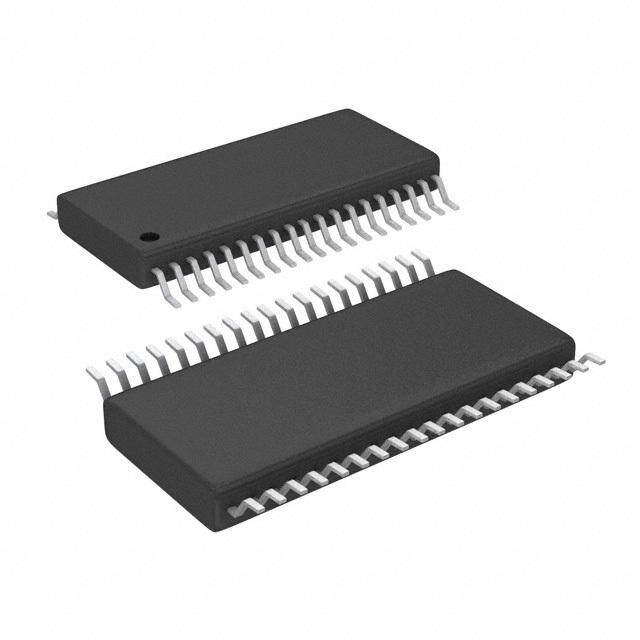



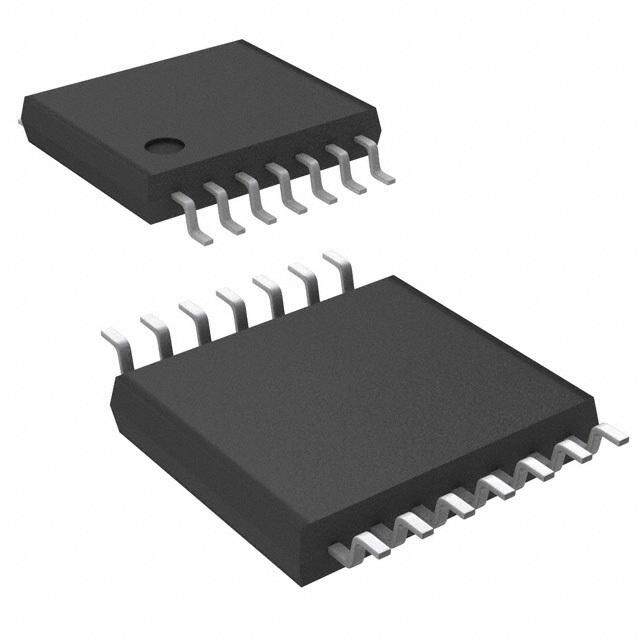

- 商务部:美国ITC正式对集成电路等产品启动337调查
- 曝三星4nm工艺存在良率问题 高通将骁龙8 Gen1或转产台积电
- 太阳诱电将投资9.5亿元在常州建新厂生产MLCC 预计2023年完工
- 英特尔发布欧洲新工厂建设计划 深化IDM 2.0 战略
- 台积电先进制程称霸业界 有大客户加持明年业绩稳了
- 达到5530亿美元!SIA预计今年全球半导体销售额将创下新高
- 英特尔拟将自动驾驶子公司Mobileye上市 估值或超500亿美元
- 三星加码芯片和SET,合并消费电子和移动部门,撤换高东真等 CEO
- 三星电子宣布重大人事变动 还合并消费电子和移动部门
- 海关总署:前11个月进口集成电路产品价值2.52万亿元 增长14.8%

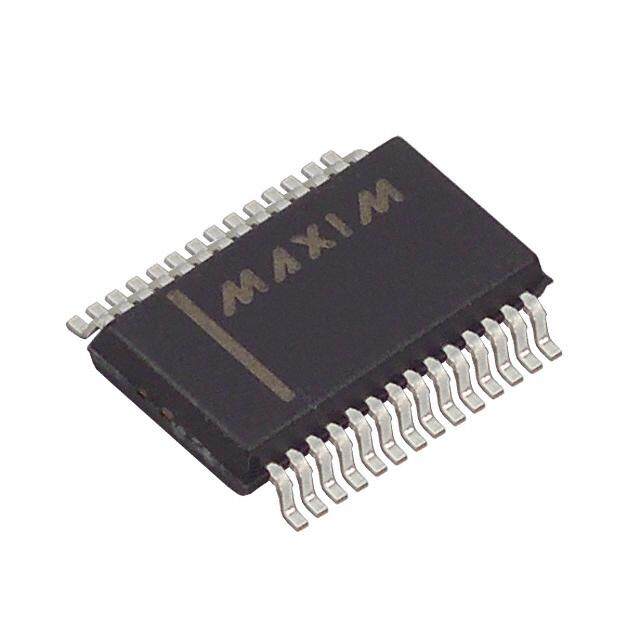

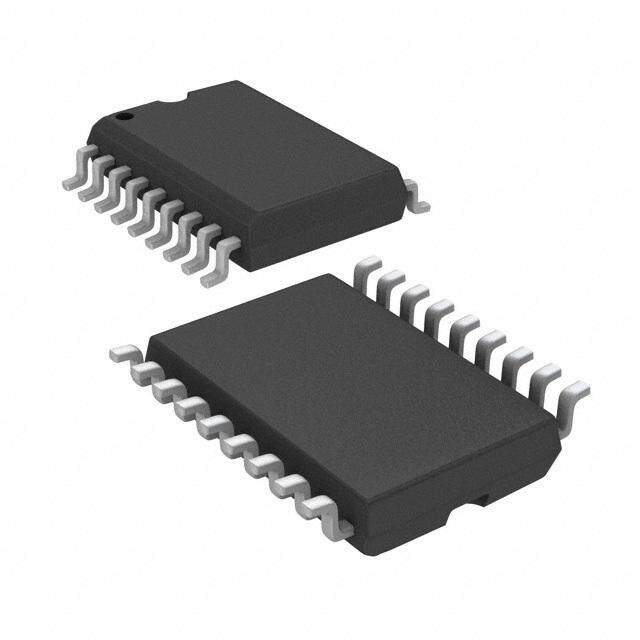



PDF Datasheet 数据手册内容提取
SP3222EB/SP3232EB True +3.0V to +5.5V RS-232 Transceivers FEATURES ■ Meets true EIA/TIA-232-F Standards from a +3.0V to +5.5V power supply ■ 250kbps Transmission Rate Under Load ■ 1µA Low Power Shutdown with Receivers active (SP3222EB) ■ Interoperable with RS-232 down to a +2.7V power source ■ Enhanced ESD Specifi cations: +15kV Human Body Model +15kV IEC61000-4-2 Air Discharge +8kV IEC61000-4-2 Contact Discharge DESCRIPTION The SP3222EB/SP3232EB series is an RS-232 transceiver solution intended for portable or hand-held applications such as notebook or laptop computers. The SP3222EB/SP3232EB series has a high-effi ciency, charge-pump power supply that requires only 0.1µF capacitors in 3.3V operation. This charge pump allows the SP3222EB/SP3232EB series to deliver true RS-232 performance from a single power supply ranging from +3.0V to +5.5V. The SP3222EB/ SP3232EB are 2-driver/2-receiver devices. The ESD tolerance of the SP3222EB/SP3232EB devices is over +/-15kV for both Human Body Model and IEC61000-4-2 Air discharge test methods. The SP3222EB device has a low-power shutdown mode where the devices' driver outputs and charge pumps are disabled. During shutdown, the supply current falls to less than 1µA. SELECTION TABLE Device Power RS-232 RS-232 External Shutdown TTL # of Supplies Drivers Receivers Components 3-State Pins SP3222EB +3.0V to 2 2 4 Capacitors Yes Yes 18, 20 +5.5V SP3232EB +3.0V to 2 2 4 Capacitors No No 16 +5.5V Exar Corporation 48720 Kato Road, Fremont CA, 94538 • 510-668-7000• www.exar.com SP3222EB/SP3232EB_106_022316 1
ABSOLUTE MAXIMUM RATINGS These are stress ratings only and functional operation of the device at these ratings or any other above those indicated in the operation sections of the specifi cations below is not implied. Exposure to absolute maximum rating conditions for extended periods of time may affect reliability and cause permanent damage to the device. V .......................................................-0.3V to +6.0V Power Dissipation per package CC V+ (NOTE 1).......................................-0.3V to +7.0V 20-pin SSOP (derate 9.25mW/oC above +70oC)..............750mW V- (NOTE 1)........................................+0.3V to -7.0V 18-pin SOIC (derate 15.7mW/oC above +70oC)..............1260mW V+ + |V-| (NOTE 1)...........................................+13V 20-pin TSSOP (derate 11.1mW/oC above +70oC).............890mW I (DC V or GND current).........................+100mA 16-pin SSOP (derate 9.69mW/oC above +70oC)...............775mW CC CC 16-pin Wide SOIC (derate 11.2mW/oC above +70oC)........900mW Input Voltages 16-pin TSSOP (derate 10.5mW/oC above +70oC)..............850mW TxIN, EN..............................................-0.3V to +6.0V 16-pin nSOIC (derate 13.57mW/oC above +70oC)...........1086mW RxIN...................................................................+25V Output Voltages Maximum Junction Temperature .......................................+125°C TxOUT.............................................................+13.2V Thermal Resistance (16-pin TSSOP) ΘJA ...................100.4°C/W RxOUT, .......................................-0.3V to (V +0.3V) Thermal Resistance (16-pin TSSOP) ΘJC .....................19.0°C/W Short-Circuit Duration CC Thermal Resistance (16-pin QFN) ΘJA ......................... 44.0°C/W TxOUT....................................................Continuous Thermal Resistance (16-pin QFN) ΘJC ...........................7.3°C/W Storage Temperature......................-65°C to +150°C NOTE 1: V+ and V- can have maximum magnitudes of 7V, but their absolute difference cannot exceed 13V. NOTE 2: Driver Input hysteresis is typically 250mV. ELECTRICAL CHARACTERISTICS Unless otherwise noted, the following specifi cations apply for V = +3.0V to +5.5V with T = T to T , CC AMB MIN MAX C1 - C4 = 0.1µF. PARAMETER MIN. TYP. MAX. UNITS CONDITIONS DC CHARACTERISTICS Supply Current 0.3 1.0 mA no load, V = 3.3V, CC T = 25oC, TxIN = GND or V AMB CC Shutdown Supply Current 1.0 10 µA SHDN = GND, VCC = 3.3V, T = 25oC, TxIN = Vcc or GND AMB LOGIC INPUTS AND RECEIVER OUTPUTS Input Logic Threshold LOW GND 0.8 V TxIN, EN, SHDN, Note 2 Input Logic Threshold HIGH 2.0 Vcc V Vcc = 3.3V, Note 2 Input Logic Threshold HIGH 2.4 Vcc V Vcc = 5.0V, Note 2 Input Leakage Current +0.01 +1.0 µA TxIN, EN, SHDN, T = +25oC, V = 0V to V AMB IN CC Output Leakage Current +0.05 +10 µA Receivers disabled, V = 0V to V OUT CC Output Voltage LOW 0.4 V I = 1.6mA OUT Output Voltage HIGH V -0.6 V -0.1 V I = -1.0mA CC CC OUT DRIVER OUTPUTS Output Voltage Swing +5.0 +5.4 V All driver outputs loaded with 3kΩ to GND, T = +25oC AMB Exar Corporation 48720 Kato Road, Fremont CA, 94538 • 510-668-7000 • www.exar.com SP3222EB/SP3232EB_106_022316 2
ELECTRICAL CHARACTERISTICS Unless otherwise noted, the following specifi cations apply for V = +3.0V to +5.5V with T = T to T , CC AMB MIN MAX C1 - C4 = 0.1µF. Typical values apply at V = +3.3V or +5.0V and T = 25°C. CC AMB PARAMETER MIN. TYP. MAX. UNITS CONDITIONS DRIVER OUTPUTS (continued) Output Resistance 300 Ω V = V+ = V- = 0V, V =+2V CC OUT Output Short-Circuit Current +35 +60 mA V = 0V OUT Output Leakage Current +25 µA V = 0V or 3.0V to 5.5V, V = CC OUT +12V, Drivers disabled RECEIVER INPUTS Input Voltage Range -15 15 V Input Threshold LOW 0.6 1.2 V Vcc = 3.3V Input Threshold LOW 0.8 1.5 V Vcc = 5.0V Input Threshold HIGH 1.5 2.4 V Vcc = 3.3V Input Threshold HIGH 1.8 2.4 V Vcc = 5.0V Input Hysteresis 0.3 V Input Resistance 3 5 7 kΩ TIMING CHARACTERISTICS Maximum Data Rate 250 kbps R = 3kΩ, C = 1000pF, one L L driver active Receiver Propagation Delay, t 0.15 µs Receiver input to Receiver PHL output, C = 150pF L Receiver Propagation Delay, t 0.15 µs Receiver input to Receiver PLH output, C = 150pF L Receiver Output Enable Time 200 ns Receiver Output Disable Time 200 ns Driver Skew 100 ns | t - t |, T = 25°C PHL PLH AMB Receiver Skew 50 ns | t - t | PHL PLH Transition-Region Slew Rate 30 V/µs Vcc = 3.3V, R = 3kΩ, L C = 1000pF, T = 25°C, L AMB measurements taken from -3.0V to +3.0V or +3.0V to -3.0V Exar Corporation 48720 Kato Road, Fremont CA, 94538 • 510-668-7000• www.exar.com SP3222EB/SP3232EB_106_022316 3
TYPICAL PERFORMANCE CHARACTERISTICS Unless otherwise noted, the following performance characteristics apply for V = +3.3V, 1000kbps data rate, all CC drivers loaded with 3kΩ, 0.1µF charge pump capacitors, and T = +25°C. AMB Figure 1. Transmitter Output Voltage vs Load Figure 2. Slew Rate vs Load Capacitance Capacitance Figure 3. Supply Current VS. Load Capacitance Figure 4. Supply Current VS. Supply Voltage when Transmitting Data Figure 5. Transmitter Output Voltage vs Supply Voltage Exar Corporation 48720 Kato Road, Fremont CA, 94538 • 510-668-7000 • www.exar.com SP3222EB/SP3232EB_106_022316 4
PIN FUNCTION PIN NUMBER SP3222EB SP3232EB NAME FUNCTION SOIC SSOP SSOP QFN TSSOP TSSOP NSOIC WSOIC Receiver Enable. Apply Logic LOW for normal operation. EN 1 1 - - Apply logic HIGH to disable the receiver outputs (high-Z state) C1+ Positive terminal of the voltage doubler charge-pump capacitor 2 2 1 15 V+ +5.5V output generated by the charge pump 3 3 2 16 C1- Negative terminal of the voltage doubler charge-pump capacitor 4 4 3 1 C2+ Positive terminal of the inverting charge-pump capacitor 5 5 4 2 C2- Negative terminal of the inverting charge-pump capacitor 6 6 5 3 V- -5.5V output generated by the charge pump 7 7 6 4 T OUT RS-232 driver output. 15 17 14 12 1 T OUT RS-232 driver output. 8 8 7 5 2 R IN RS-232 receiver input 14 16 13 11 1 R IN RS-232 receiver input 9 9 8 6 2 R OUT TTL/CMOS receiver output 13 15 12 10 1 R OUT TTL/CMOS receiver output 10 10 9 7 2 T IN TTL/CMOS driver input 12 13 11 9 1 T IN TTL/CMOS driver input 11 12 10 8 2 GND Ground. 16 18 15 13 V +3.0V to +5.5V supply voltage 17 19 16 14 CC Shutdown Control Input. Drive HIGH for normal device opera- SHDN tion. Drive LOW to shutdown the drivers (high-Z output) and 18 20 - - the on-board power supply N.C. No Connect - 11, 14 - - Table 1. Device Pin Description Exar Corporation 48720 Kato Road, Fremont CA, 94538 • 510-668-7000• www.exar.com SP3222EB/SP3232EB_106_022316 5
PINOUT Figure 6. Pinout Confi gurations for the SP3222EB Figure 7. Pinout Confi guration for the SP3232EB Exar Corporation 48720 Kato Road, Fremont CA, 94538 • 510-668-7000 • www.exar.com SP3222EB/SP3232EB_106_022316 6
TYPICAL OPERATING CIRCUITS Figure 8. SP3222EB Typical Operating Circuits Figure 9. SP3232EB Typical Operating Circuit Exar Corporation 48720 Kato Road, Fremont CA, 94538 • 510-668-7000• www.exar.com SP3222EB/SP3232EB_106_022316 7
DESCRIPTION The SP3222EB/SP3232EB transceivers The drivers can guarantee a data rate of meet the EIA/TIA-232 and ITU-T V.28/V.24 250kbps fully loaded with 3kΩ in parallel communication protocols and can be imple- with 1000pF, ensuring compatability with mented in battery-powered, portable, or PC-to-PC communication software. hand-held applications such as notebook or palmtop computers. The SP3222EB/ The slew rate of the driver is internally limited SP3232EB devices feature Exar's propri- to a maximum of 30V/µs in order to meet the etary on-board charge pump circuitry that EIA standards (EIA RS-232D 2.1.7, Para- generates ±5.5V for RS-232 voltage levels graph 5). The transition of the loaded output from a single +3.0V to +5.5V power supply. from HIGH to LOW also meet the monotonic- This series is ideal for +3.3V-only systems, ity requirements of the standard. mixed +3.3V to +5.5V systems, or +5.0V-only systems that require true RS-232 perfor- Figure 10 shows a loopback test circuit mance. The SP3222EB/SP3232EB devices used to test the RS-232 Drivers. Figure can operate at a data rate of 250kbps when 11 shows the test results of the loopback fully loaded. circuit with all drivers active at 120kbps with RS-232 loads in parallel with a The SP3222EB and SP3232EB are 2- 1000pF capacitor. Figure 12 shows the driver/2- receiver devices ideal for portable test results where one driver was active or hand-held applications. The SP3222EB at 250kbps and all drivers loaded with an features a 1µA shutdown mode that reduces RS-232 receiver in parallel with 1000pF power consumption and extends battery life capacitors. A solid RS-232 data transmis- in portable systems. Its receivers remain sion rate of 250kbps provides compatibility active in shutdown mode, allowing external with many designs in personal computer devices such as modems to be monitored peripherals and LAN applications. using only 1µA supply current. The SP3222EB driver's output stages are turned off (tri-state) when the device is in THEORY OF OPERATION shutdown mode. When the power is off, the The SP3222EB/SP3232EB series is made SP3222EB device permits the outputs to be up of three basic circuit blocks: driven up to +/-12V. The driver's inputs do 1. Drivers not have pull-up resistors. Designers should 2. Receivers connect unused inputs to Vcc or GND. 3. The Exar proprietary charge pump In the shutdown mode, the supply current falls to less than 1µA, where SHDN = LOW. Drivers When the SP3222EB device is shut down, The drivers are inverting level transmitters the device's driver outputs are disabled (tri- that convert TTL or CMOS logic levels to stated) and the charge pumps are turned off +5.0V EIA/TIA-232 levels with an inverted with V+ pulled down to Vcc and V- pulled to sense relative to the input logic levels. GND. The time required to exit shutdown is Typically, the RS-232 output voltage swing typically 100µs. Connect SHDN to Vcc if the is +5.4V with no load and +5V minimum fully shutdown mode is not used. loaded. The driver outputs are protected against infi nite short-circuits to ground with- out degradation in reliability. Driver outputs will meet EIA/TIA-562 levels of +/-3.7V with supply voltages as low as 2.7V. Exar Corporation 48720 Kato Road, Fremont CA, 94538 • 510-668-7000 • www.exar.com SP3222EB/SP3232EB_106_022316 8
DESCRIPTION Receivers The Receivers convert EIA/TIA-232 levels to TTL or CMOS logic output levels. The SP3222EB receivers have an inverting tri-state output. These receiver outputs (RxOUT) are tri-stated when the enable control EN = HIGH. In the shutdown mode, the receivers can be active or inactive. EN has no effect on TxOUT. The truth table logic of the SP3222EB driver and receiver outputs can be found in Table 2. SHDN EN TxOUT RxOUT 0 0 Tri-state Active 0 1 Tri-state Tri-state 1 0 Active Active Figure 10. SP3222EB/SP3232EB Driver Loopback 1 1 Active Tri-state Test Circuit Table 2. SP3222EB Truth Table Logic for Shutdown and Enable Control Since receiver input is usually from a trans- mission line where long cable lengths and system interference can degrade the signal, the inputs have a typical hysteresis margin of 300mV. This ensures that the receiver is virtually immune to noisy transmission lines. Should an input be left unconnected, an internal 5kΩ pulldown resistor to ground will commit the output of the receiver to a HIGH state. Figure 11. Loopback Test results at 120kbps Charge Pump The charge pump is an Exar-patended design (U.S. 5,306,954) and uses a unique approach compared to older less-effi cient designs. The charge pump still requires four external capacitors, but uses a four-phase voltage shifting technique to attain sym- metrical 5.5V power supplies. The internal power supply consists of a regulated dual charge pump that provides output voltages of +/-5.5V regardless of the input voltage (Vcc) over the +3.0V to +5.5V range. Figure 12. Loopback Test results at 250kbps Exar Corporation 48720 Kato Road, Fremont CA, 94538 • 510-668-7000• www.exar.com SP3222EB/SP3232EB_106_022316 9
DESCRIPTION In most circumstances, decoupling the power Phase 4 supply can be achieved adequately using — V transfer — The fourth phase of DD a 0.1µF bypass capacitor at C5 (refer to the clock connects the negative terminal fi gures 8 and 9) of C to GND, and transfers this positive 2 generated voltage across C to C , the 2 4 In applications that are sensitive to power- V storage capacitor. This voltage is DD supply noise, decouple Vcc to ground with a regulated to +5.5V. At this voltage, the in- capacitor of the same value as charge-pump ternal oscillator is disabled. Simultaneous capacitor C1. Physically connect bypass with the transfer of the voltage to C , the 4 capcitors as close to the IC as possible. positive side of capacitor C is switched 1 to V and the negative side is con- CC The charge pump operates in a discontinu- nected to GND, allowing the charge ous mode using an internal oscillator. If the pump cycle to begin again. The charge output voltages are less than a magnitude pump cycle will continue as long as the of 5.5V, the charge pump is enabled. If the operational conditions for the internal output voltages exceed a magnitude of 5.5V, oscillator are present. the charge pump is disabled. This oscillator controls the four phases of the voltage shift- Since both V+ and V– are separately gener- ing. A description of each phase follows. ated from V , in a no–load condition V+ CC and V– will be symmetrical. Older charge Phase 1 pump approaches that generate V– from — V charge storage — During this phase V+ will show a decrease in the magnitude SS of the clock cycle, the positive side of capaci- of V– compared to V+ due to the inherent tors C and C are initially charged to V . ineffi ciencies in the design. 1 2 CC C+ is then switched to GND and the charge l in C – is transferred to C –. Since C + is con- The clock rate for the charge pump typically 1 2 2 nected to V , the voltage potential across operates at greater than 250kHz. The exter- CC capacitor C is now 2 times V . nal capacitors can be as low as 0.1µF with 2 CC a 16V breakdown voltage rating. Phase 2 — V transfer — Phase two of the clock SS connects the negative terminal of C to the V 2 SS storage capacitor and the positive terminal of C to GND. This transfers a negative gener- 2 ated voltage to C . This generated voltage is 3 regulated to a minimum voltage of -5.5V. Simultaneous with the transfer of the volt- age to C , the positive side of capacitor C 3 1 is switched to V and the negative side is CC connected to GND. Phase 3 — V charge storage — The third phase of DD the clock is identical to the fi rst phase — the charge transferred in C produces –V in 1 CC the negative terminal of C , which is applied 1 to the negative side of capacitor C . Since 2 C + is at V , the voltage potential across C 2 CC 2 is 2 times V . CC Exar Corporation 48720 Kato Road, Fremont CA, 94538 • 510-668-7000 • www.exar.com SP3222EB/SP3232EB_106_022316 10
DESCRIPTION Figure 13. Charge Pump — Phase 1 Figure 14. Charge Pump — Phase 2 Figure 15. Charge Pump Waveforms Figure 16. Charge Pump — Phase 3 Figure 17. Charge Pump — Phase 4 Exar Corporation 48720 Kato Road, Fremont CA, 94538 • 510-668-7000• www.exar.com SP3222EB/SP3232EB_106_022316 11
DESCRIPTION ESD TOLERANCE the system is required to withstand an amount of static electricity when ESD is applied to The SP3222EB/SP3232EB series incor- points and surfaces of the equipment that porates ruggedized ESD cells on all driver are accessible to personnel during normal output and receiver input pins. The ESD usage. The transceiver IC receives most structure is improved over our previous of the ESD current when the ESD source is family for more rugged applications and applied to the connector pins. The test circuit environments sensitive to electro-static for IEC61000-4-2 is shown on Figure 19. discharges and associated transients. The There are two methods within IEC61000-4-2, improved ESD tolerance is at least +15kV the Air Discharge method and the Contact without damage nor latch-up. Discharge method. There are different methods of ESD testing With the Air Discharge Method, an ESD applied: voltage is applied to the equipment under a) MIL-STD-883, Method 3015.7 test (EUT) through air. This simulates an b) IEC61000-4-2 Air-Discharge electrically charged person ready to connect c) IEC61000-4-2 Direct Contact a cable onto the rear of the system only to fi nd an unpleasant zap just before the person The Human Body Model has been the touches the back panel. The high energy generally accepted ESD testing method potential on the person discharges through for semi-conductors. This method is also an arcing path to the rear panel of the system specifi ed in MIL-STD-883, Method 3015.7 before he or she even touches the system. for ESD testing. The premise of this ESD test This energy, whether discharged directly or is to simulate the human body’s potential to through air, is predominantly a function of the store electro-static energy and discharge it discharge current rather than the discharge to an integrated circuit. The simulation is voltage. Variables with an air discharge such performed by using a test model as shown as approach speed of the object carrying the in Figure 18. This method will test the IC’s ESD potential to the system and humidity capability to withstand an ESD transient will tend to change the discharge current. during normal handling such as in manu- For example, the rise time of the discharge facturing areas where the ICs tend to be current varies with the approach speed. handled frequently. The Contact Discharge Method applies the The IEC-61000-4-2, formerly IEC801-2, is ESD current directly to the EUT. This method generally used for testing ESD on equipment was devised to reduce the unpredictability and systems. For system manufacturers, of the ESD arc. The discharge current rise they must guarantee a certain amount of ESD time is constant since the energy is directly protection since the system itself is exposed transferred without the air-gap arc. In situ- to the outside environment and human pres- ations such as hand held systems, the ESD ence. The premise with IEC61000-4-2 is that charge can be directly discharged to the Figure 18. ESD Test Circuit for Human Body Model Exar Corporation 48720 Kato Road, Fremont CA, 94538 • 510-668-7000 • www.exar.com SP3222EB/SP3232EB_106_022316 12
DESCRIPTION Figure 19. ESD Test Circuit for IEC61000-4-2 equipment from a person already holding The higher C value and lower R value in S S the equipment. The current is transferred the IEC61000-4-2 model are more stringent on to the keypad or the serial port of the than the Human Body Model. The larger equipment directly and then travels through storage capacitor injects a higher voltage the PCB and fi nally to the IC. to the test point when SW2 is switched on. The lower current limiting resistor increases The circuit models in Figures 18 and 19 rep- the current charge onto the test point. resent the typical ESD testing circuit used for all three methods. The C is initially charged S with the DC power supply when the fi rst switch (SW1) is on. Now that the capacitor is charged, the second switch (SW2) is on while SW1 switches off. The voltage stored in the capacitor is then applied through R , S the current limiting resistor, onto the device under test (DUT). In ESD tests, the SW2 switch is pulsed so that the device under test receives a duration of voltage. For the Human Body Model, the current limiting resistor (R ) and the source capacitor S (C ) are 1.5kΩ an 100pF, respectively. For S IEC-61000-4-2, the current limiting resistor (R ) and the source capacitor (C ) are 330Ω S S an 150pF, respectively. Figure 20. ESD Test Waveform for IEC61000-4-2 DEVICE PIN HUMAN BODY IEC61000-4-2 TESTED MODEL Air Discharge Direct Contact Level Driver Outputs +15kV +15kV +8kV 4 Receiver Inputs +15kV +15kV +8kV 4 Table 3. Transceiver ESD Tolerance Levels Exar Corporation 48720 Kato Road, Fremont CA, 94538 • 510-668-7000• www.exar.com SP3222EB/SP3232EB_106_022316 13
PACKAGE: 20 PIN SSOP Exar Corporation 48720 Kato Road, Fremont CA, 94538 • 510-668-7000 • www.exar.com SP3222EB/SP3232EB_106_022316 14
PACKAGE: 16 PIN SSOP Exar Corporation 48720 Kato Road, Fremont CA, 94538 • 510-668-7000• www.exar.com SP3222EB/SP3232EB_106_022316 15
PACKAGE: 16 PIN WSOIC Exar Corporation 48720 Kato Road, Fremont CA, 94538 • 510-668-7000 • www.exar.com SP3222EB/SP3232EB_106_022316 16
PACKAGE: 18 PIN WSOIC Exar Corporation 48720 Kato Road, Fremont CA, 94538 • 510-668-7000• www.exar.com SP3222EB/SP3232EB_106_022316 17
PACKAGE: 16 PIN nSOIC Exar Corporation 48720 Kato Road, Fremont CA, 94538 • 510-668-7000 • www.exar.com SP3222EB/SP3232EB_106_022316 18
PACKAGE: 16 PIN TSSOP Exar Corporation 48720 Kato Road, Fremont CA, 94538 • 510-668-7000• www.exar.com SP3222EB/SP3232EB_106_022316 19
PACKAGE: 20 PIN TSSOP Exar Corporation 48720 Kato Road, Fremont CA, 94538 • 510-668-7000 • www.exar.com SP3222EB/SP3232EB_106_022316 20
PACKAGE: 16 PIN QFN Exar Corporation 48720 Kato Road, Fremont CA, 94538 • 510-668-7000• www.exar.com SP3222EB/SP3232EB_106_022316 21
ORDERING INFORMATION Part Number Temp. Range Package SP3222EBCA-L 0°C to +70°C 20 Pin SSOP SP3222EBCA-L/TR 0°C to +70°C 20 Pin SSOP SP3222EBCT-L 0°C to +70°C 18 Pin WSOIC SP3222EBCT-L/TR 0°C to +70°C 18 Pin WSOIC SP3222EBCY-L 0°C to +70°C 20 Pin TSSOP SP3222EBCY-L/TR 0°C to +70°C 20 Pin TSSOP SP3222EBEA-L -40°C to +85°C 20 Pin SSOP SP3222EBEA-L/TR -40°C to +85°C 20 Pin SSOP SP3222EBET-L -40°C to +85°C 18 Pin WSOIC SP3222EBET-L/TR -40°C to +85°C 18 Pin WSOIC SP3222EBEY-L -40°C to +85°C 20 Pin TSSOP SP3222EBEY-L/TR -40°C to +85°C 20 Pin TSSOP Part Number Temp. Range Package SP3232EBCA-L 0°C to +70°C 16 Pin SSOP SP3232EBCA-L/TR 0°C to +70°C 16 Pin SSOP SP3232EBCN-L 0°C to +70°C 16 Pin NSOIC SP3232EBCN-L/TR 0°C to +70°C 16 Pin NSOIC SP3232EBCT-L 0°C to +70°C 16 Pin WSOIC SP3232EBCT-L/TR 0°C to +70°C 16 Pin WSOIC SP3232EBCY-L 0°C to +70°C 16 Pin TSSOP SP3232EBCY-L/TR 0°C to +70°C 16 Pin TSSOP SP3232EBEA-L -40°C to +85°C 16 Pin SSOP SP3232EBEA-L/TR -40°C to +85°C 16 Pin SSOP SP3232EBEN-L -40°C to +85°C 16 Pin NSOIC SP3232EBEN-L/TR -40°C to +85°C 16 Pin NSOIC SP3232EBET-L -40°C to +85°C 16 Pin WSOIC SP3232EBET-L/TR -40°C to +85°C 16 Pin WSOIC SP3232EBEY-L -40°C to +85°C 16 Pin TSSOP SP3232EBEY-L/TR -40°C to +85°C 16 Pin TSSOP SP3232EBER-L -40°C to +85°C 16 Pin QFN SP3232EBER-L/TR -40°C to +85°C 16 Pin QFN Note: "/TR" is for tape and Reel option. "-L" is for lead free packaging Exar Corporation 48720 Kato Road, Fremont CA, 94538 • 510-668-7000 • www.exar.com SP3222EB/SP3232EB_106_022316 22
REVISION HISTORY DATE REVISION DESCRIPTION 11/02/05 -- Legacy Sipex Datasheet 09/09/09 1.0.0 Convert to Exar Format, Update ordering information and change revision to 1.0.0. 06/07/11 1.0.1 Remove obsolete devices per PDN 110510-01 and change ESD rating to IEC-61000-4-2. 03/14/13 1.0.2 Correct type error to RX input voltage range and TX transi- tion region slew rate condition. 8/14/14 1.0.3 Add Max Junction temperature and package thermal infor- mation. 5/28/15 1.0.4 Update Absolute Max Rating for RxIN input voltage to +/-25V, update logo. 10/27/15 1.0.5 Add SP3232EBER (QFN_16) preliminary package option. 2/23/16 1.0.6 Remove preminary status of QFN_16 package option. Notice EXAR Corporation reserves the right to make changes to any products contained in this publication in order to improve design, performance or reli- ability. EXAR Corporation assumes no representation that the circuits are free of patent infringement. Charts and schedules contained herein are only for illustration purposes and may vary depending upon a user's specifi c application. While the information in this publication has been carefully checked; no responsibility, however, is assumed for inaccuracies. EXAR Corporation does not recommend the use of any of its products in life support applications where the failure or malfunction of the product can reasonably be expected to cause failure of the life support system or to signifi cantly affect its safety or effectiveness. Products are not authorized for use in such applications unless EXAR Corporation receives, in writting, assurances to its satisfaction that: (a) the risk of injury or damage has been minimized ; (b) the user assumes all such risks; (c) potential liability of EXAR Corporation is adequately protected under the circumstances. Copyright 2016 EXAR Corporation Datasheet February 2016 Send your serial transceiver technical inquiry with technical details to: serialtechsupport@exar.com Reproduction, in part or whole, without the prior written consent of EXAR Corporation is prohibited. Exar Corporation 48720 Kato Road, Fremont CA, 94538 • 510-668-7000• www.exar.com SP3222EB/SP3232EB_106_022316 23
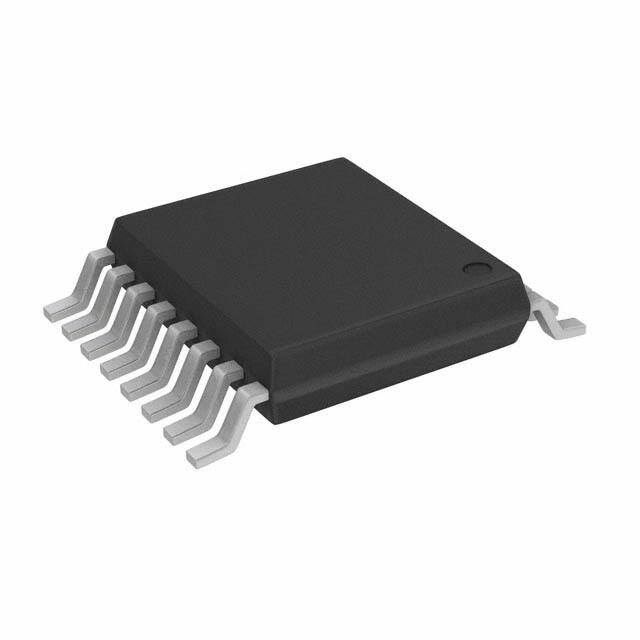
 Datasheet下载
Datasheet下载

